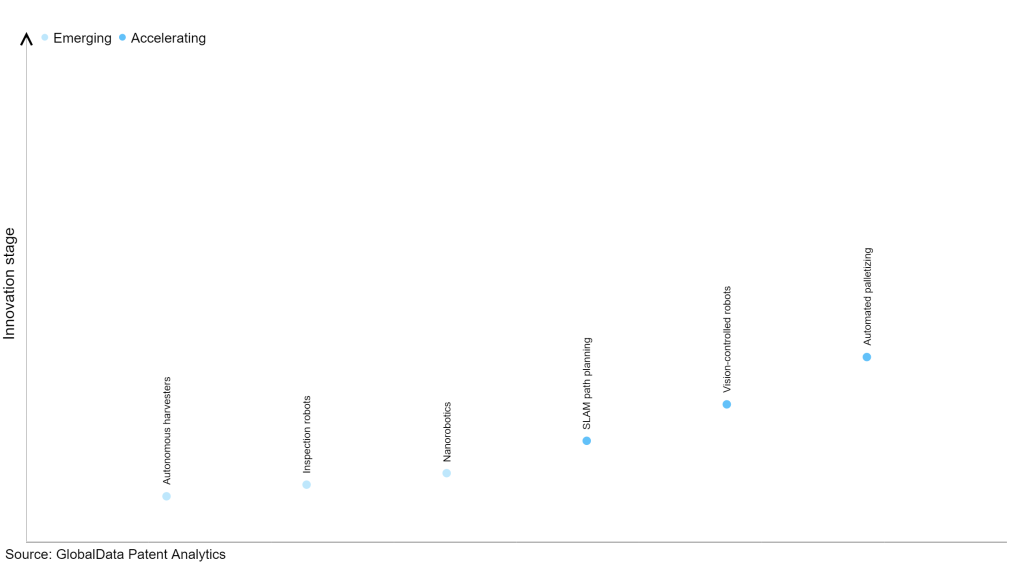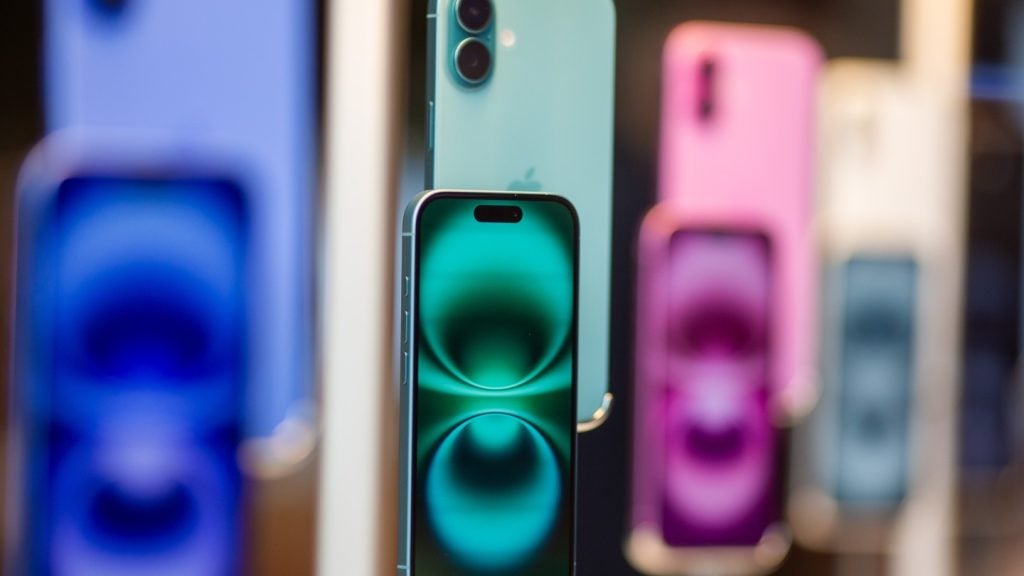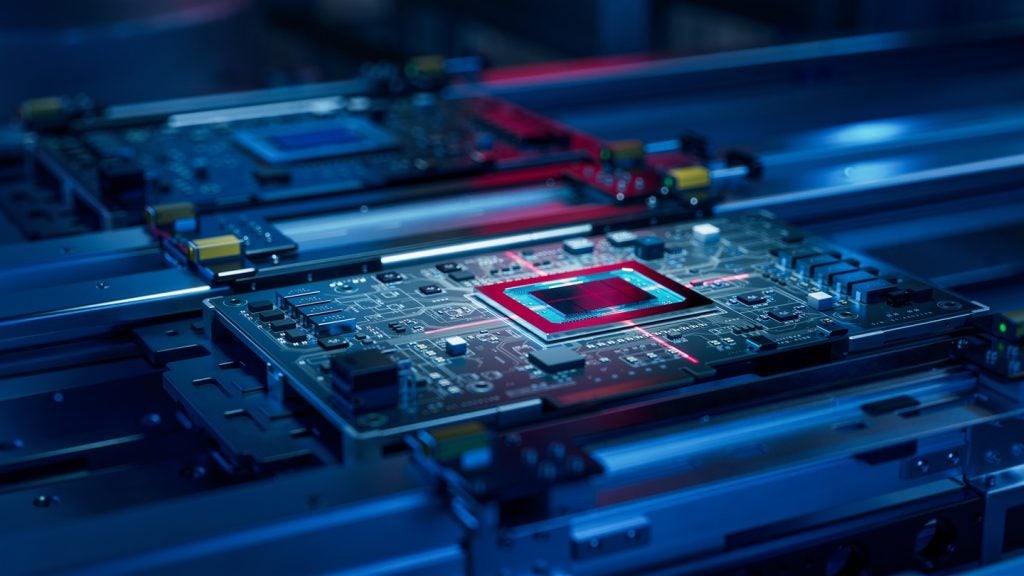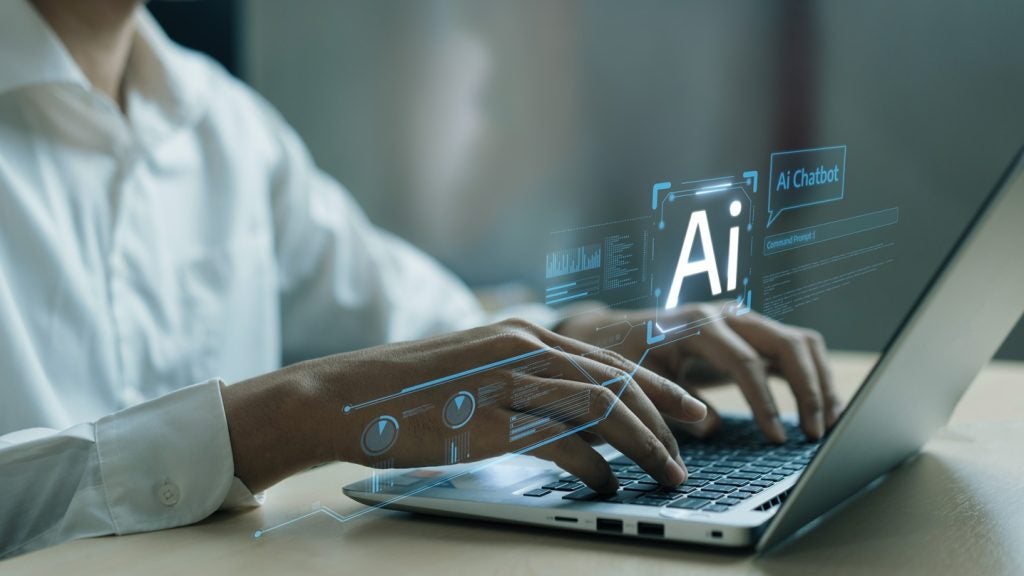The technology industry continues to be a hotbed of patent innovation. Activity is driven by advancements in robotics, machine learning, artificial intelligence (AI), and sensor technologies, and growing importance of technologies such as cameras, image processing, deep learning, and object detection and recognition. These technologies work together to enable vision-controlled robots to perceive their environment, recognize objects, and perform complex tasks based on visual information. Vision-controlled robots find applications in various fields, including industrial automation, logistics, healthcare, agriculture, and autonomous vehicles. In the last three years alone, there have been over 1.5 million patents filed and granted in the technology industry, according to GlobalData’s report on Robotics in technology: vision-controlled robots. Buy the report here.
However, not all innovations are equal and nor do they follow a constant upward trend. Instead, their evolution takes the form of an S-shaped curve that reflects their typical lifecycle from early emergence to accelerating adoption, before finally stabilizing and reaching maturity.
Identifying where a particular innovation is on this journey, especially those that are in the emerging and accelerating stages, is essential for understanding their current level of adoption and the likely future trajectory and impact they will have.
185+ innovations will shape the technology industry
According to GlobalData’s Technology Foresights, which plots the S-curve for the technology industry using innovation intensity models built on over 1.6 million patents, there are 185+ innovation areas that will shape the future of the industry.
Within the emerging innovation stage, autonomous harvesters, inspection robots and nanorobotics are disruptive technologies that are in the early stages of application and should be tracked closely. SLAM path planning, vision-controlled robots, and automated palletizing are some of the accelerating innovation areas, where adoption has been steadily increasing.
Innovation S-curve for robotics in the technology industry

Vision-controlled robots is a key innovation area in robotics
Vision-controlled robots refer to robots that possess the ability to utilize visual sensors for object detection and employ image recognition algorithms to monitor, interpret, and react to their surroundings. These robots can be programmed to engage with their environment through diverse actions, encompassing tasks like navigation, manipulation, obstacle avoidance, and intelligent decision-making.
GlobalData’s analysis also uncovers the companies at the forefront of each innovation area and assesses the potential reach and impact of their patenting activity across different applications and geographies. According to GlobalData, there are 650+ companies, spanning technology vendors, established technology companies, and up-and-coming start-ups engaged in the development and application of vision-controlled robots.
Key players in vision-controlled robots – a disruptive innovation in the technology industry
‘Application diversity’ measures the number of applications identified for each patent. It broadly splits companies into either ‘niche’ or ‘diversified’ innovators.
‘Geographic reach’ refers to the number of countries each patent is registered in. It reflects the breadth of geographic application intended, ranging from ‘global’ to ‘local’.
Patent volumes related to vision-controlled robots
Source: GlobalData Patent Analytics
Fanuc is the leading patent filer in vision-controlled robots. The company’s patents are aimed at a robot system including a robot and a hand for holding a workpiece, a sensor for measuring a work area in which the workpiece exists to obtain a three-dimensional shape in the work area as measurement data, a measurement data processing device including a model data storage unit, a measurement data correction unit, and a position and orientation calculation unit.
The system also includes a robot control unit for controlling the robot based on an output from the position and orientation calculation unit. In a learning stage. the measurement data correction unit creates teacher data by arranging the model data calculated by the position and orientation calculation unit and adjusts a parameter for correcting the measurement data based on the measurement data and the teacher data. In a picking stage, outputs corrected measurement data are obtained by correcting the measurement data using the adjusted parameter.
Other prominent patent filers in the space include Kawasaki Heavy Industries, LG, Seiko Epson, and Canon.
By geographic reach, Teleflex leads the pack, followed by The Charles Stark Draper Laboratory and Deutsche Telekom. In terms of application diversity, Kawasaki Heavy Industries holds the top position, followed by Fanuc and LG.
Vision-controlled robots can enhance perception, increase adaptability, improve safety, and enable intelligent operation. These robots play a pivotal role in various industries, contributing to automation, efficiency, and advancements in robotics and computer vision technologies.
To further understand how robotics is disrupting the technology industry, access GlobalData’s latest thematic research report on Robotics.
Data Insights
From

The gold standard of business intelligence.
Blending expert knowledge with cutting-edge technology, GlobalData’s unrivalled proprietary data will enable you to decode what’s happening in your market. You can make better informed decisions and gain a future-proof advantage over your competitors.







